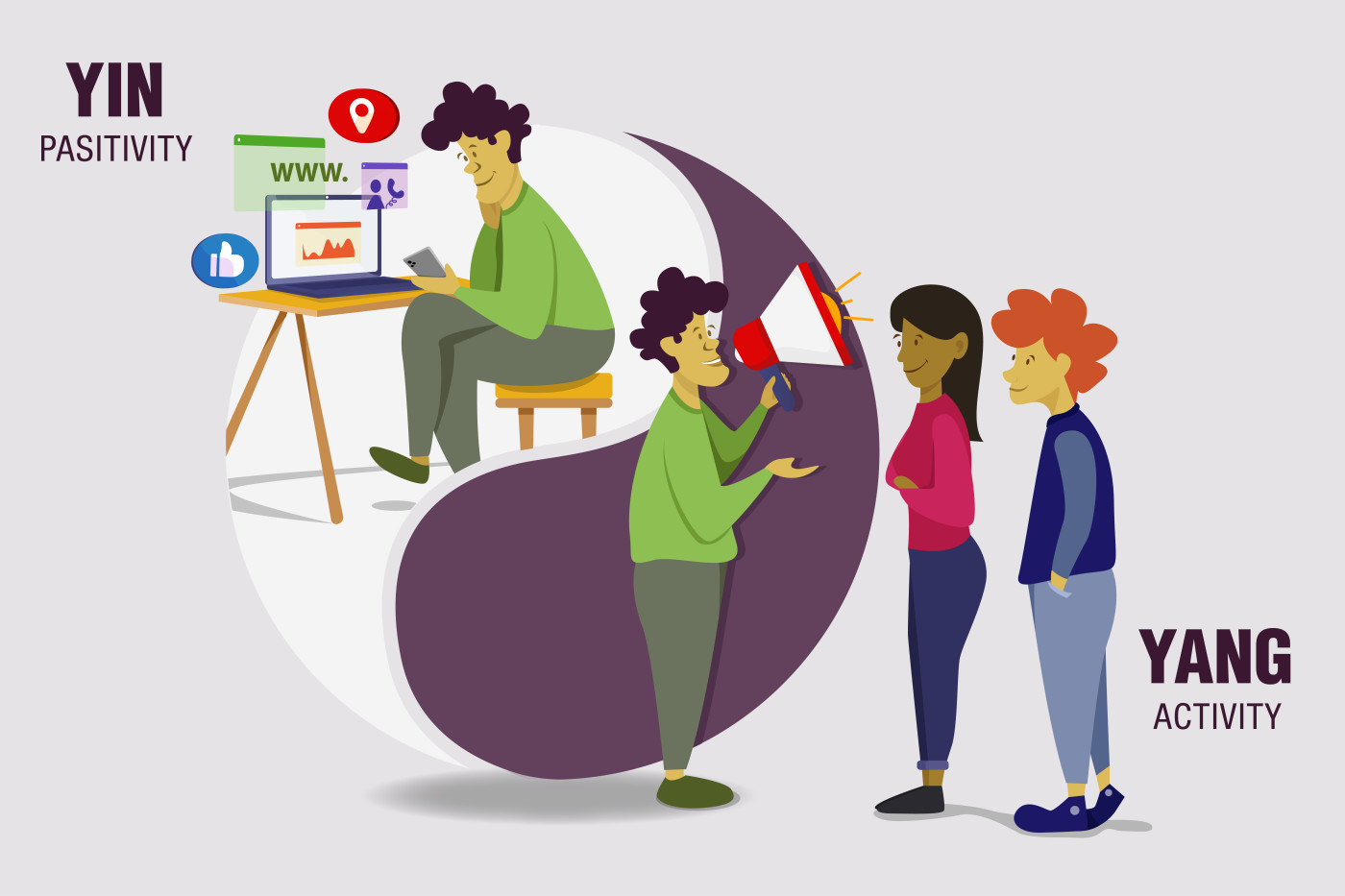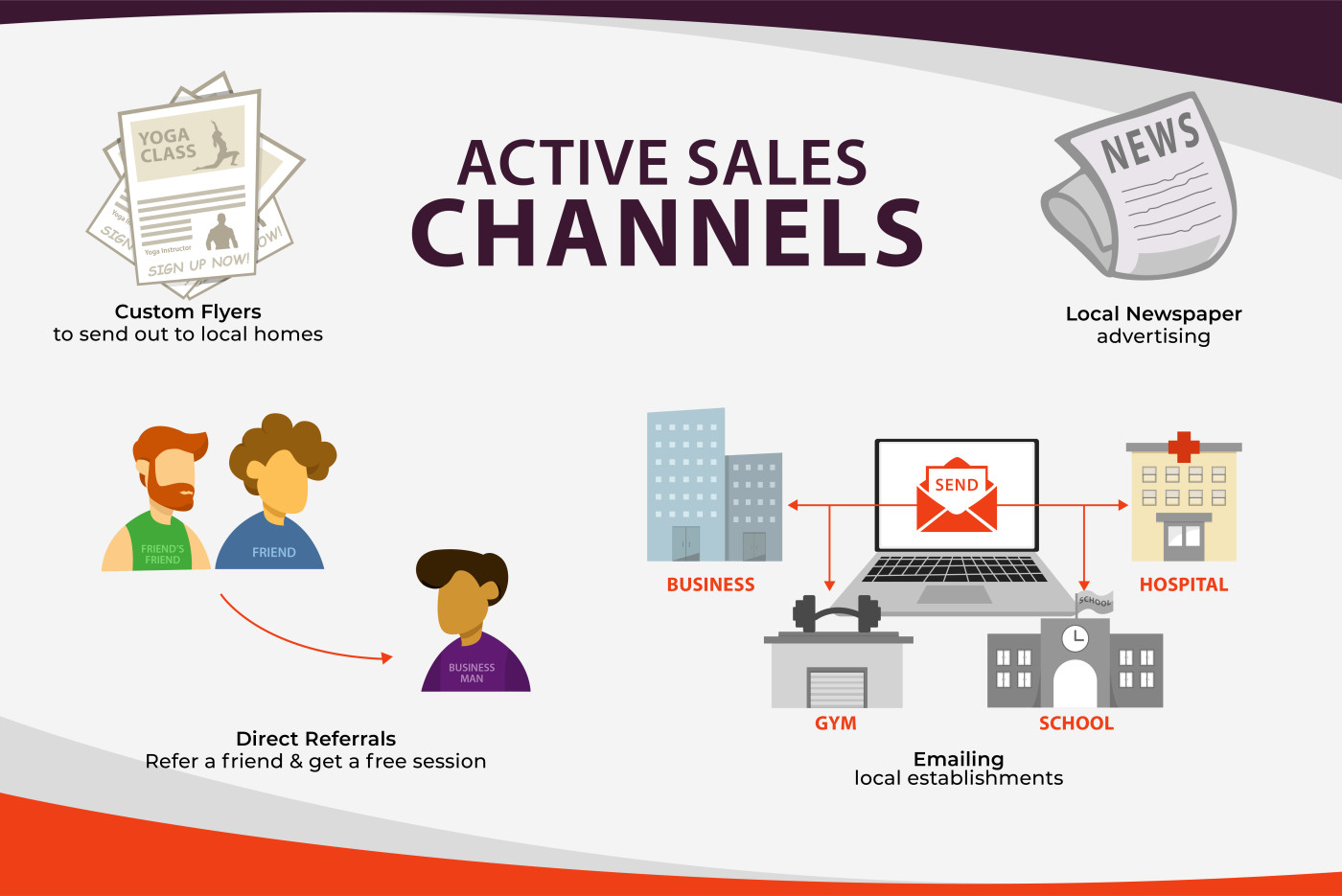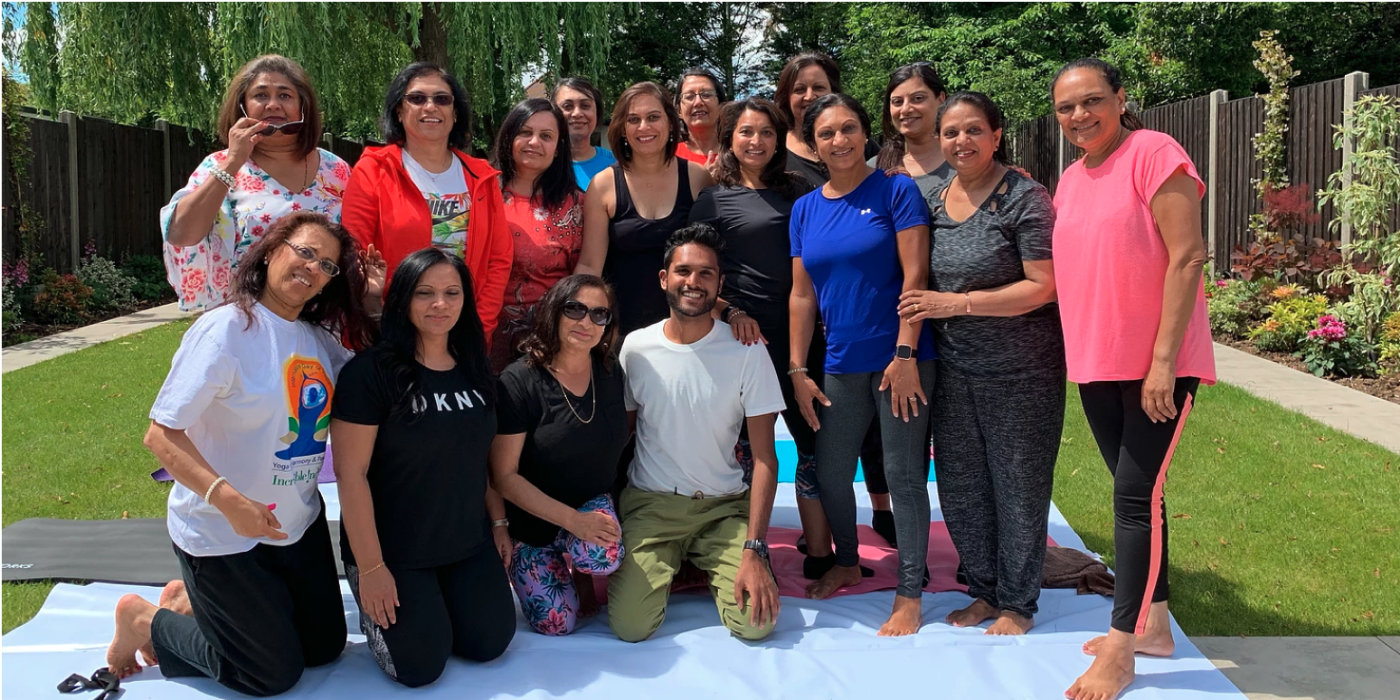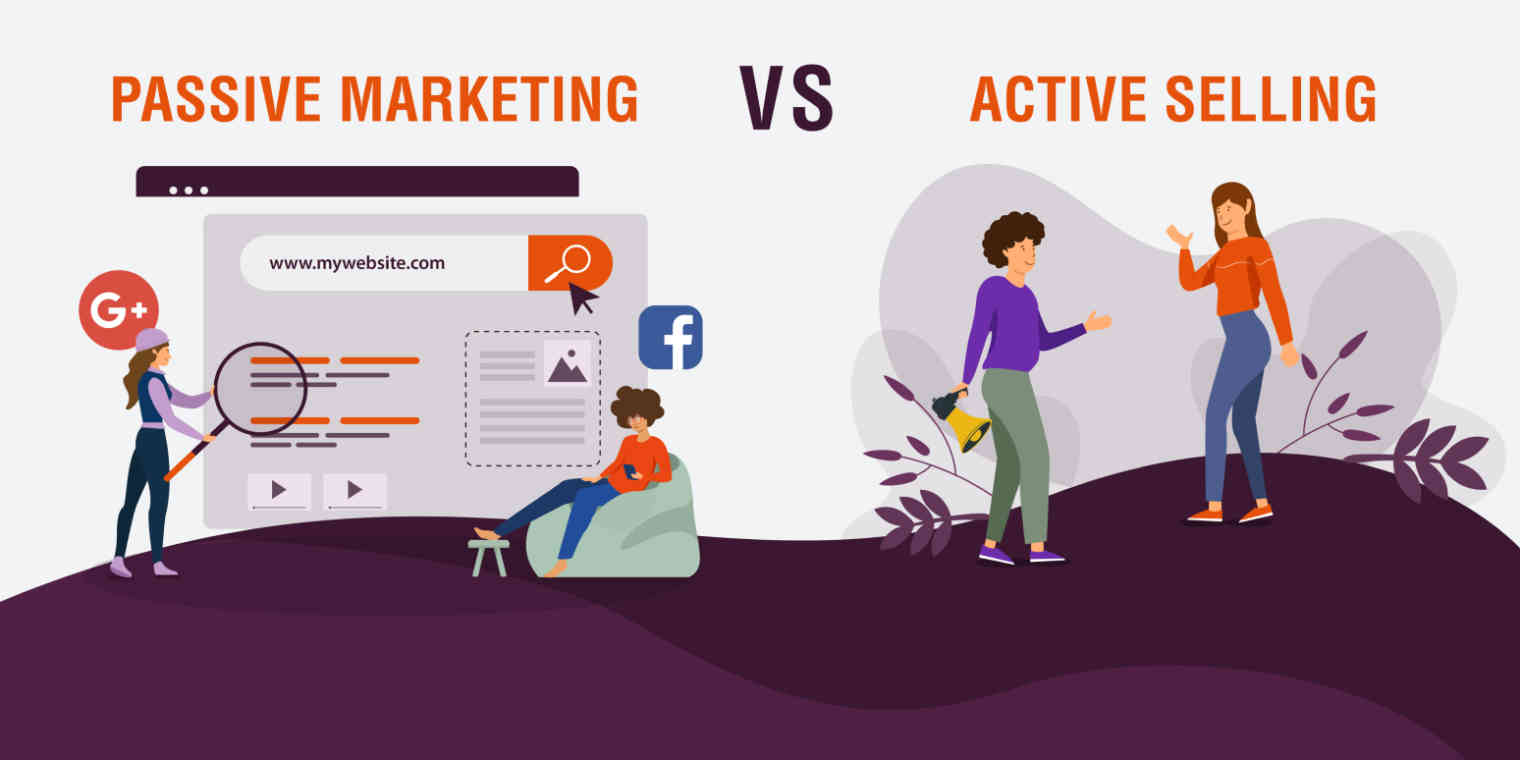Digital advertising—on Facebook, Google, and anywhere else—accounts for hundreds of billions of dollars in ad spend every year. And for good reason: these staple platforms are incredibly competitive and represent an audience that is actively seeking products or services. Small businesses advertise with the expectation that someone will knock on their online door and carry out a particular goal.
But advertising is expensive. And not only that—it's passive. That's ok for some purposes, but I've found that removing the competition and getting active with your selling can serve the purposes of a small business much more.
Getting online-ready
Having spent 18 months diving deep into the world of spirituality, I launched a pre-pandemic business as a yoga and meditation teacher at Amsat Yoga, with the goal of spreading the fruits of Eastern principles to the West. Eager to share these wonderful techniques, I set up an online shop and pumped the website full of juicy content. At the time, I knew little about SEO, and it wasn't long before I realized I was the only person visiting my website.
It was an incredibly lonely experience, and I fell firmly into the 90% of websites whose content falls into the abyss.
Eager for quick results, I made the decision to advertise on Google and Facebook. Setting up the campaigns was a daunting task, the complexity of the available tools went way over my head, and I realized that ad management was a highly specialized skill in itself. Having botched some campaigns together, I sat there in a passive state, hoping for someone to contact me.
After a month, I had acquired three long-term clients. Of course, it was for a sizable cost per acquisition, one that would require at least two sessions each to break even. A decent result, yes, but I couldn't help but think: is this it? Do I simply advertise, wait, and hope for the best?
I had learned some valuable lessons from studying Eastern principles. One of them is the concept of yin and yang, in which two forces that seem to be in opposition are actually connected and support each other. While I was personally striving for an internal balance of my mind and body, my business lacked the yang (active) to help assist the yin (passive).
So I set off to rectify this imbalance.

Moving to active selling
If Google and Facebook represented all those potential customers "in market" (i.e., actively looking for yoga or meditation help), I wanted to focus on those "out of market." These are the people who aren't searching for me and might not even know that they'd benefit from spiritual practices.
The key questions I had: Who are these people? Where are they? Why would they want my services? And why now? In answering these questions, I let my mind exercise complete creative freedom. There were no silly suggestions—the wilder the better. And after much brainstorming, I identified the following potential active sales channels:
Soliciting direct referrals (e.g., refer a friend and get a free session)
Emailing local schools to teach students
Emailing local hospitals to teach doctors, nurses, and patients
Emailing local gyms to teach group classes
Emailing businesses focused on well-being to teach their employees
Sending custom flyers to local residences
Advertising in the local newspaper

Balance restored
In business, failure is part of the process, so let's start with what didn't work.
I got in touch with my old school, and they were super keen to try yoga and meditation for students to support some mental health initiatives. I was invited to speak to 300 teenagers and sell them on the perks of yoga. Apparently I didn't nail it because, when the teacher sent out a survey to see who would be interested, only two said yes. So that was off the table due to low interest.
Hospitals didn't reply to me. Makes sense because they have life and death matters to attend to.
Local gyms didn't get back to me either. I didn't spend much time trying to figure out why—with no responses, it seemed like a clear answer.
I initially received positive interest from two businesses, but they eventually stopped replying to my follow-ups.
Advertising in the local newspaper was too expensive, and I didn't like how I had to simplify my proposition to a few words in a tiny box.
That's all to say that most of my ideas didn't pan out. But a few did.
In addition to meeting the head teacher at my old school, I also chatted with another educator there. It just so happens that she was in the market for a yoga teacher. I told her about my travels and my approach toward teaching, we exchanged numbers, and she organized six of her friends to come over to her house for me to teach. It was luck, yes, but a result of my active selling.

Another win also came from a different school. A family friend worked at a school whose head teacher wanted to bring the perks of physical and mental well-being seen in startups to the world of academia for teachers. We arranged a meeting and kicked off a weekly class. A few dropped off, but I had a group of 10 regulars in the long run—and I didn't need to pay for space because we did it at the school.
My most dependable friend, though, turned out to be flyers. I spent some time designing them with an A5 matte card finish, and whenever I had spare time, I would go out and systematically deliver them to homes in my neighborhood.

I calculated that I had about a 0.08% success rate, so I had to deliver 1,200 flyers to capture one client. But it was a pretty fixed cost per acquisition (unlike PPC ads, flyers cost the same no matter what keywords you use on them), and unless the historical results changed quite a bit, this dependable channel always existed. No, it's not glamorous, but it gets the job done.
You can't really do more than literally knock on the door of each and every one of your potential customers. Occasionally, I would see the homeowner and give them the flyer directly, which meant I got to present myself in-person for an extra boost.
Starting small doesn't mean staying small. Here's a look at how small-scale marketing can help your growing business.
Sales is a learnable skill
Selling isn't a natural-born skill for only those with exceptional vocabulary and a silky tongue. Back in my first sales role (before the yoga business), I would get all sweaty before making a call and stutter when trying to converse—I just hated the entire experience. But with time, perseverance, and a can-do attitude, I found my groove. Sales, like most everything else, is a learnable skill.
And while these specific selling solutions might not be applicable to an online business, what is transferable is the idea of balancing the yin and yang forces of your business. That is, you can maintain your passive marketing (or develop it if you haven't already), while also allowing yourself the opportunity to think about how to try active selling.
This is your laboratory to explore alternative, complementary avenues to meet the same objectives as Google and Facebook ads. You never know unless you try, right? You'll likely see a lot of failure, but you also might find a new, more budget-friendly marketing strategy. Foster your inner creativity to find your out-of-market audience, and see who you can find—instead of making them find you.
This is a guest post from Amit Gami, founder of ANG Leads, where he connects small businesses with various products or services by using an innovative matchmaking algorithm. Want to see your work on the Zapier blog? Read our guidelines, and get in touch.





